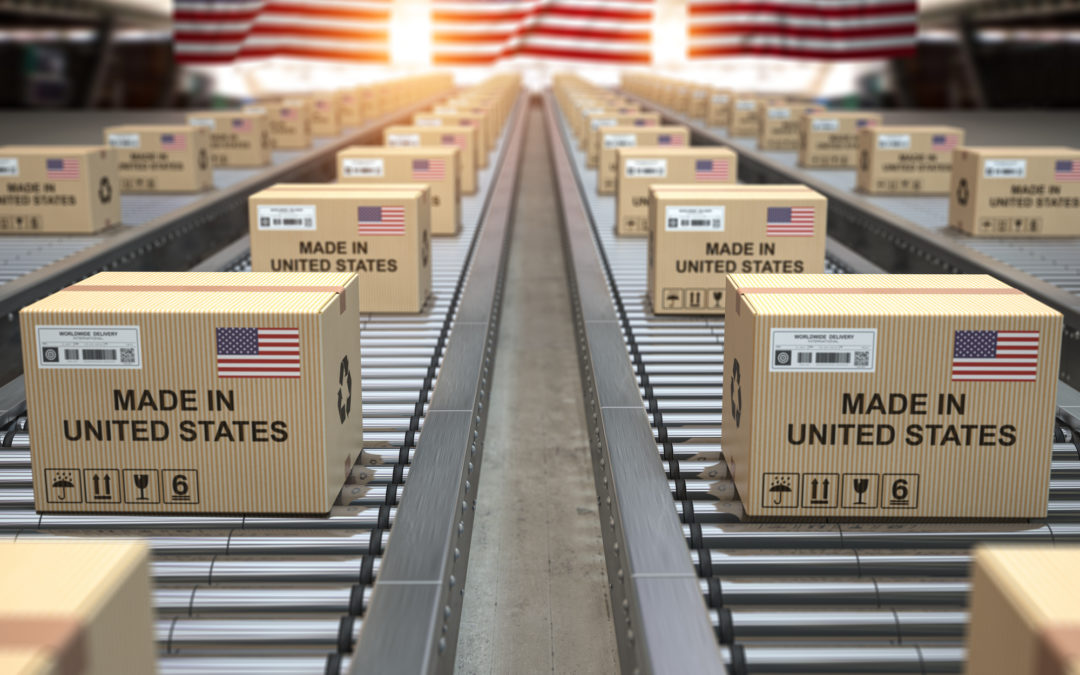“Made in the USA.” When we see this on a product, buying it makes most of us feel pretty good. We know that we’re supporting American jobs and the economy.
But does buying American really matter? And what does “Made in the USA” really mean? In a time when inflation has consumers really feeling the pinch, is it worth it?
In short, yes, “Made in the USA” matters. Manufacturing drives growth in the US economy through job creation and technology innovation. And, leaving economics largely to the economists, what you need to know is that a growing economy is a healthy economy.
Let’s take a closer look at “Made in the USA.”
“MADE IN THE USA” – LABEL
“Made in the USA” really means just that. Companies must follow very specific guidelines to be able to put a “Made in the USA” label on a product. Products must be entirely or virtually entirely made in the United States, as established and overseen by the Federal Trade Commission. This policy definition includes the 50 states, the District of Columbia, and all US territories and possessions. And it’s not just the final product; the standard for “Made in the USA” means all significant parts and processing of the product must be of US origin and—in the case of manufacturing and assembly—take place in the US.
Ultimately, a “Made in the USA” label means there is no foreign content in the product and the product was made in one of the US states, districts, or territories.
For most products, there is no requirement to disclose origins. However many companies and manufacturers see the label as a positive—a differentiator that may make products more attractive to US buyers.
WHAT “MADE IN THE USA” MEANS FOR CONSUMERS
Since March 2020, we’ve all learned more about supply chains and global trade than we ever expected. We understand better than ever how the global supply chain affects what shows up on shelves—or what doesn’t (like toilet paper, or like the microchips that caused inventory shortages and delays in the auto market). We’ve learned how sourcing from lower-cost regions of the world like China and India can be vulnerable to shutdowns, lockdowns, shortages, and more, affecting American consumers in multiple dimensions from availability to cost.
While this visibility has heightened awareness, the reality is that there has been a shift underway for some time. Consumer preference has tilted toward US-made goods for several years. In fact, recent research reveals consumers are willing to pay up to 20% more for goods made in the USA. This is true for consumer goods as well as business-to-business and industrial purchases.
In addition, many people feel that “buying American” is more patriotic and that USA-made goods are of higher quality. It may be perception, but it’s a perception that sticks.
Of course, our shift toward buying American comes after a nearly 30-year cycle of demand for lower-cost goods that pushed production from the United States into lower-cost regions of the world. This cycle is shifting back to US soil as people realize that the ultimate cost can damage the national economy. It could perhaps even risk our position of power and influence in the world.
US MANUFACTURING DRIVES GROWTH IN THE US ECONOMY
We said at the beginning of this article that a growing economy is a healthy economy. According to research by Deloitte, for every $1 invested in US manufacturing, $1.81 in value is generated in return. Manufacturers contribute $2.17 trillion to the national economy—over 12% of gross domestic product (GDP), or the measure of the market value of the country’s output of products and services. Manufacturing also supports more than 40 million jobs in the US. What funds this activity? Demand from consumers—and when we buy American and buy local, we are creating more demand for goods manufactured right here.
WHY LOCAL BUSINESS MATTERS
Global trends and national business matter to the economy. But so do local small businesses. In fact, research shows 67 cents of every dollar spent at a local business stays in the local economy. In addition, every dollar spent locally generates another 50 cents in business in the local community, creating an amplifier effect. Imagine this: you purchase shoes at a local store, and the store owner makes a purchase from another local business. The money continues to travel around and within your community.
Small businesses have enormous collective power. In fact, together US-based small businesses generate $4.8 trillion in gross domestic product (GDP)—making them equivalent to the third-largest economy in the world.
GUTTER SENSE – PROUDLY MADE IN THE USA
Given what we’ve shared about “Made in the USA,” the connection between manufacturing and the national economy, and the importance of local businesses, we’re especially proud Gutter Sense is made in the USA. All components and labor are sourced locally to our Chicago-area business. Everything from the nuts and bolts to the pull rope, monofilament, insert cards, polybags, and injection-molded tongs. Each tool is also assembled locally, meaning that we adhere to the strictest definition of “Made in the USA.”
In addition, Gutter Sense is a small, family-owned business. My daughter Paige and I run everything from customer service to operations and order fulfillment. We feel great satisfaction knowing we’re behind a product that makes people’s lives easier and contributes to our national and local economy.
This article originally appeared in October 2021 and was updated in January 2023.

